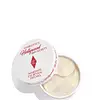What's inside
What's inside
 Key Ingredients
Key Ingredients

 Benefits
Benefits

 Concerns
Concerns

 Ingredients Side-by-side
Ingredients Side-by-side

Water
Skin ConditioningGlycerin
HumectantButylene Glycol
HumectantNiacinamide
SmoothingCaffeine
Skin ConditioningCucumis Sativus Fruit Extract
EmollientSodium Hyaluronate
HumectantAvena Sativa Kernel Extract
AbrasiveAcetyl Hexapeptide-8
HumectantBisabolol
MaskingPanthenol
Skin ConditioningCamellia Sinensis Leaf Extract
AntimicrobialAllantoin
Skin ConditioningSimmondsia Chinensis Seed Oil
EmollientCornus Officinalis Fruit Extract
Skin ConditioningPrunus Serotina Fruit Extract
MaskingPunica Granatum Fruit Extract
AntioxidantRubus Idaeus Fruit Extract
AstringentVaccinium Macrocarpon Fruit Extract
AstringentIllicium Verum Fruit Extract
PerfumingPanax Ginseng Root Extract
EmollientEthylhexylglycerin
Skin ConditioningGlutathione
Sodium Phytate
Sucrose
HumectantCellulose Gum
Emulsion StabilisingGellan Gum
Xanthan Gum
EmulsifyingSodium Polyacrylate
AbsorbentCalcium Lactate
AstringentDextrin
AbsorbentCyclodextrin
AbsorbentPinus Sylvestris Leaf Extract
TonicPotassium Chloride
Hydroxyacetophenone
Antioxidant1,2-Hexanediol
Skin ConditioningHexylene Glycol
EmulsifyingPentylene Glycol
Skin ConditioningCarrageenan
Ceratonia Siliqua Gum
EmollientSynthetic Fluorphlogopite
CI 77007
Cosmetic ColorantCI 77891
Cosmetic ColorantCI 77499
Cosmetic ColorantWater, Glycerin, Butylene Glycol, Niacinamide, Caffeine, Cucumis Sativus Fruit Extract, Sodium Hyaluronate, Avena Sativa Kernel Extract, Acetyl Hexapeptide-8, Bisabolol, Panthenol, Camellia Sinensis Leaf Extract, Allantoin, Simmondsia Chinensis Seed Oil, Cornus Officinalis Fruit Extract, Prunus Serotina Fruit Extract, Punica Granatum Fruit Extract, Rubus Idaeus Fruit Extract, Vaccinium Macrocarpon Fruit Extract, Illicium Verum Fruit Extract, Panax Ginseng Root Extract, Ethylhexylglycerin, Glutathione, Sodium Phytate, Sucrose, Cellulose Gum, Gellan Gum, Xanthan Gum, Sodium Polyacrylate, Calcium Lactate, Dextrin, Cyclodextrin, Pinus Sylvestris Leaf Extract, Potassium Chloride, Hydroxyacetophenone, 1,2-Hexanediol, Hexylene Glycol, Pentylene Glycol, Carrageenan, Ceratonia Siliqua Gum, Synthetic Fluorphlogopite, CI 77007, CI 77891, CI 77499
Water
Skin ConditioningGlycerin
HumectantChondrus Crispus Powder
AbrasiveCalcium Chloride
Astringent1,2-Hexanediol
Skin ConditioningButylene Glycol
HumectantCeratonia Siliqua Gum
EmollientHydroxyacetophenone
AntioxidantPentylene Glycol
Skin ConditioningXanthan Gum
EmulsifyingPolyglyceryl-10 Laurate
Skin ConditioningPhenoxyethanol
PreservativeAllantoin
Skin ConditioningEthylhexylglycerin
Skin ConditioningSynthetic Fluorphlogopite
Sodium Phytate
Parfum
MaskingTin Oxide
AbrasiveCI 77891
Cosmetic ColorantPropanediol
SolventHydroxyethylcellulose
Emulsion StabilisingIpomoea Batatas Root Extract
Skin ConditioningColeus Forskohlii Root Extract
EmollientTrehalose
HumectantUrea
BufferingSerine
MaskingMicrococcus Lysate
Skin ConditioningAlgin
MaskingCaprylyl Glycol
EmollientDisodium Phosphate
BufferingGlyceryl Polyacrylate
Potassium Phosphate
BufferingPullulan
Sodium Hyaluronate
HumectantWater, Glycerin, Chondrus Crispus Powder, Calcium Chloride, 1,2-Hexanediol, Butylene Glycol, Ceratonia Siliqua Gum, Hydroxyacetophenone, Pentylene Glycol, Xanthan Gum, Polyglyceryl-10 Laurate, Phenoxyethanol, Allantoin, Ethylhexylglycerin, Synthetic Fluorphlogopite, Sodium Phytate, Parfum, Tin Oxide, CI 77891, Propanediol, Hydroxyethylcellulose, Ipomoea Batatas Root Extract, Coleus Forskohlii Root Extract, Trehalose, Urea, Serine, Micrococcus Lysate, Algin, Caprylyl Glycol, Disodium Phosphate, Glyceryl Polyacrylate, Potassium Phosphate, Pullulan, Sodium Hyaluronate
Ingredients Explained
These ingredients are found in both products.
Ingredients higher up in an ingredient list are typically present in a larger amount.
1,2-Hexanediol is a synthetic liquid and another multi-functional powerhouse.
It is a:
- Humectant, drawing moisture into the skin
- Emollient, helping to soften skin
- Solvent, dispersing and stabilizing formulas
- Preservative booster, enhancing the antimicrobial activity of other preservatives
Allantoin is a soothing ingredient known for its protective and moisturizingg properties. Because of this, it is often added to products with strong active ingredients.
Studies show higher concentrations of this ingredient can promote wound healing.
Though it can be derived from the comfrey plant, allantoin is produced synthetically for cosmetic products to ensure purity.
Learn more about AllantoinButylene Glycol (or BG) is used within cosmetic products for a few different reasons:
Overall, Butylene Glycol is a safe and well-rounded ingredient that works well with other ingredients.
Though this ingredient works well with most skin types, some people with sensitive skin may experience a reaction such as allergic rashes, closed comedones, or itchiness.
Learn more about Butylene GlycolCeratonia Siliqua Gum is extracted from the seeds of the carob tree. You might know this ingredient as Carob Gum or Locust Bean Gum. It is used to stabilize other ingredients and improve the texture of products.
Carob gum is made up of long-chain polysaccharides. This makes it a natural thickener.
Yes! This ingredient comes from the seeds of a tree. The name 'Locust Bean Gum' can be misleading.
Learn more about Ceratonia Siliqua GumCi 77891 is a white pigment from Titanium dioxide. It is naturally found in minerals such as rutile and ilmenite.
It's main function is to add a white color to cosmetics. It can also be mixed with other colors to create different shades.
Ci 77891 is commonly found in sunscreens due to its ability to block UV rays.
Learn more about CI 77891Ethylhexylglycerin (we can't pronounce this either) is commonly used as a preservative and skin softener. It is derived from glyceryl.
You might see Ethylhexylglycerin often paired with other preservatives such as phenoxyethanol. Ethylhexylglycerin has been found to increase the effectiveness of these other preservatives.
Glycerin is already naturally found in your skin. It helps moisturize and protect your skin.
A study from 2016 found glycerin to be more effective as a humectant than AHAs and hyaluronic acid.
As a humectant, it helps the skin stay hydrated by pulling moisture to your skin. The low molecular weight of glycerin allows it to pull moisture into the deeper layers of your skin.
Hydrated skin improves your skin barrier; Your skin barrier helps protect against irritants and bacteria.
Glycerin has also been found to have antimicrobial and antiviral properties. Due to these properties, glycerin is often used in wound and burn treatments.
In cosmetics, glycerin is usually derived from plants such as soybean or palm. However, it can also be sourced from animals, such as tallow or animal fat.
This ingredient is organic, colorless, odorless, and non-toxic.
Glycerin is the name for this ingredient in American English. British English uses Glycerol/Glycerine.
Learn more about GlycerinHydroxyacetophenone is antioxidant with skin conditioning and soothing properties. It also boosts the efficiency of preservatives.
This ingredient is not irritating or sensitizing.
Pentylene glycol is typically used within a product to thicken it. It also adds a smooth, soft, and moisturizing feel to the product. It is naturally found in plants such as sugar beets.
The hydrophilic trait of Pentylene Glycol makes it a humectant. As a humectant, Pentylene Glycol helps draw moisture from the air to your skin. This can help keep your skin hydrated.
This property also makes Pentylene Glycol a great texture enhancer. It can also help thicken or stabilize a product.
Pentylene Glycol also acts as a mild preservative and helps to keep a product microbe-free.
Some people may experience mild eye and skin irritation from Pentylene Glycol. We always recommend speaking with a professional about using this ingredient in your routine.
Pentylene Glycol has a low molecular weight and is part of the 1,2-glycol family.
Learn more about Pentylene GlycolSodium Hyaluronate is hyaluronic acid's salt form. It is commonly derived from the sodium salt of hyaluronic acid.
Like hyaluronic acid, it is great at holding water and acts as a humectant. This makes it a great skin hydrating ingredient.
Sodium Hyaluronate is naturally occurring in our bodies and is mostly found in eye fluid and joints.
These are some other common types of Hyaluronic Acid:
Learn more about Sodium HyaluronateSodium Phytate is the synthetic salt form of phytic acid. Phytic acid is an antioxidant and can be found in plant seeds.
Sodium Phytate is a chelating agent. Chelating agents help prevent metals from binding to water. This helps stabilize the ingredients and the product.
Synthetic Fluorphlogopite is the synthethic version of mica. It consists of fluorine, aluminum and silicate.
Synthetic Fluorphlogopite is used to add volume to products.
It is considered non-irritating on the skin.
Learn more about Synthetic FluorphlogopiteWater. It's the most common cosmetic ingredient of all. You'll usually see it at the top of ingredient lists, meaning that it makes up the largest part of the product.
So why is it so popular? Water most often acts as a solvent - this means that it helps dissolve other ingredients into the formulation.
You'll also recognize water as that liquid we all need to stay alive. If you see this, drink a glass of water. Stay hydrated!
Learn more about WaterXanthan gum is used as a stabilizer and thickener within cosmetic products. It helps give products a sticky, thick feeling - preventing them from being too runny.
On the technical side of things, xanthan gum is a polysaccharide - a combination consisting of multiple sugar molecules bonded together.
Xanthan gum is a pretty common and great ingredient. It is a natural, non-toxic, non-irritating ingredient that is also commonly used in food products.
Learn more about Xanthan Gum